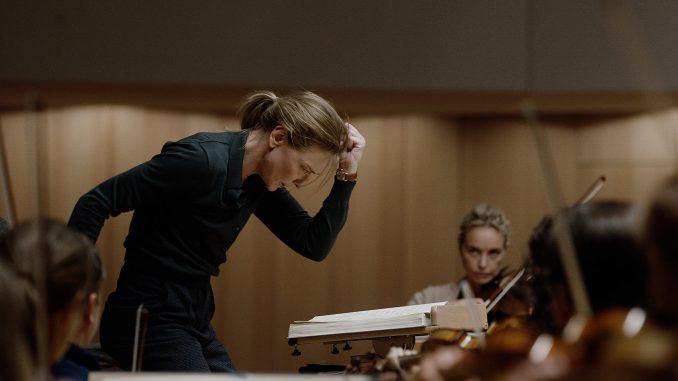
Cate Blanchett puts on an exceptional performance as Lydia Tár in the 2022 drama “Tár,” which came to theaters nationwide on Oct. 28. This two hour and 38-minute-long film centers around Lydia Tár, a world-renowned conductor of the Berlin Philharmonic. Following a series of events slowly unraveling Tár’s life, she is eventually exiled from the music industry and her family in a seemingly real-life analysis on exploiting one’s power and the longevity of cancel culture.
Sixteen years since his last movie, Todd Field has stepped back into the limelight, and no better way to do it than with “Tár” which he wrote and directed. The film has already received four wins and nine nominations before the start of award season, including: audience favorite at the Mill Valley Film Festival, outstanding performer of the year at the Santa Barbara International Film Festival and best actress at the Venice Film Festival, amongst many others for Blanchett.
In a movie centered around orchestras and symphonies, Field cast a mixture of professional musicians like cello player Sophie Kauer who plays Olga Metkina and actors like Blanchett, as well as Nina Hoss (Sharon Goodnow) and Noémie Merlant (Francesca Lentini). “The finest actors I have known and the finest musicians I have known are very similar because they understand very practical principles about touch and tempo and dynamics and sound. It was important that everyone who makes music on screen makes the music,” explained Field.
For Blanchett, who’s in all but two shots of the film, there was a lot to learn in order to fully commit to her role. She took piano lessons, and learned some German. But the most impressive part is that she learned how to conduct the real-life Dresden Philharmonic in Mahler’s Symphony No. 5. This process began with studying videos of master classes led by conductor Ilya Musin, where she rehearsed hand gestures for keeping time with conductor Natalie Murray Beale. “I was lucky in that everyone was outside their comfort zone. The musicians had to act and I had to conduct, and in the middle we met,” said Blanchett. Her commitment to turning herself into Lydia Tár was palpable, as each on-screen hand movement was made with a certain poignancy that could be felt from your seat.
But one of the most impressive aspects of “Tár” is the attention to detail. Blanchett would always walk at 120 beats per minute — “During production, she had something in her ear, and she’s always walking 120 beats per minute. Whereas, say, Olga, the young cellist [played by cellist Sophie Kauer], would walk at 60 beats per minute,” said Field. The film uses time as medium, like tempo change in music, Tár does the same. Michael Andor Brodeur of the Washington Post explains it as a legato smoothness for the long takes, which moves into a staccato in the third act.
It would be remiss of me to not mention the incredibly powerful storyline. For a drama geared around music, the film grasps onto an aura of horror. The viewer is constantly on edge as if expecting a jumpscare but it never comes. Maybe this is an ode to just how harrowingly real the plot feels. “Tár nevertheless upends the prevailing narrative in making a powerful woman a potential predator,” describes The Hollywood Reporter. A person in a position of power using their status for their own personal gain is a story that is far from fictional, especially in this day and age. But seeing it all from the perspective of a woman and a queer woman — that is refreshing.

